Perdido Key, located in the northwest part of Florida, is a small barrier island rich in wildlife diversity. One of the most spectacular sights one can witness on the island is the presence of various bird species.
The area is a haven for bird lovers and ornithologists alike, offering a tranquil natural environment for observing and studying these feathered creatures. Perdido Key is home to both migratory and resident species, ranging from shorebirds and wading birds to raptors and songbirds.
With its diverse habitats and proximity to the Gulf of Mexico, Perdido Key attracts an impressive variety of birdlife throughout the year.
In this article, we will explore the fascinating world of birds in Perdido Key, their behavior, and their role in maintaining the ecological balance of the island’s ecosystems.
1. Bald Eagle
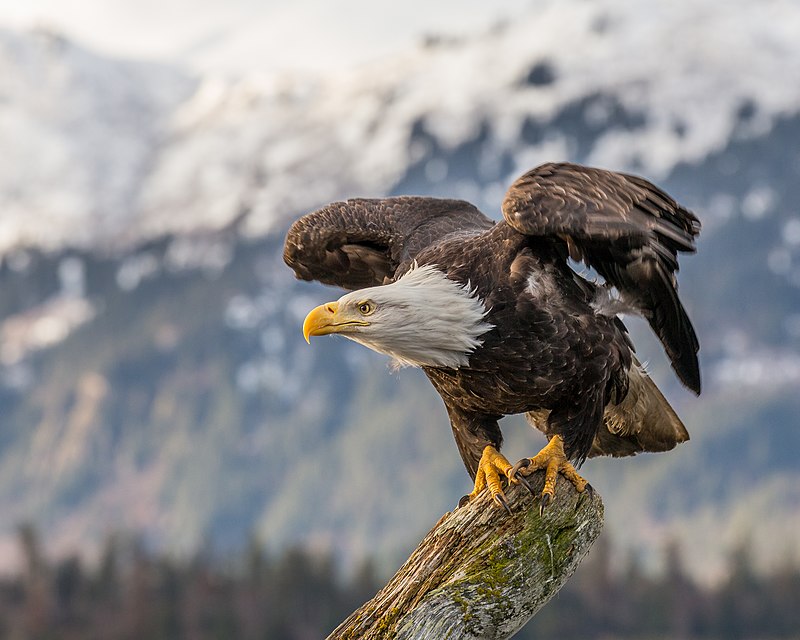
The majestic Bald Eagle is a bird of prey found in North America and recognized as the national symbol of the United States.
With its distinctive white head, brown body and striking yellow beak, this sea eagle has two known subspecies that form a species pair with the White-tailed Eagle.
It inhabits much of Canada, Alaska all states in the US contiguous area and Northern Mexico near large bodies of water where they feed mainly on fish.
These birds have an impressive wingspan ranging from 1.8 to 2 meters depending on their size making them one of nature’s most magnificent creatures.Scientific classification:
| Kingdom | Animalia |
| Phylum | Chordata |
| Class | Aves |
| Order | Accipitriformes |
| Family | Accipitridae |
| Genus | Haliaeetus |
| Species | H. leucocephalus |
Also Featured In: Most Common United States Birds, Birds That Live in Colorado
2. Red-Winged Blackbird

The red-winged blackbird is a beautiful bird found in most of North America and Central America.
Its distinct features include a glossy black body, with white shoulder patches and bright red wing coverts year round.
It prefers wetland habitats such as marshes, ponds, lakeshores and agricultural fields. During breeding season they inhabit grassy areas near water then move south for the winter months.
For food they mainly eat insects but also consume wild fruit or grains.
They are very social birds often seen in large flocks during migration times when their unmistakable “conk-la-ree” call can be heard echoing across the sky.Scientific classification:
| Kingdom | Animalia |
| Phylum | Chordata |
| Class | Aves |
| Order | Passeriformes |
| Family | Icteridae |
| Genus | Agelaius |
| Species | A. phoeniceus |
Also Featured In: Flocks Birds around Us, Birds Commonly Found in New York
3. Killdeer
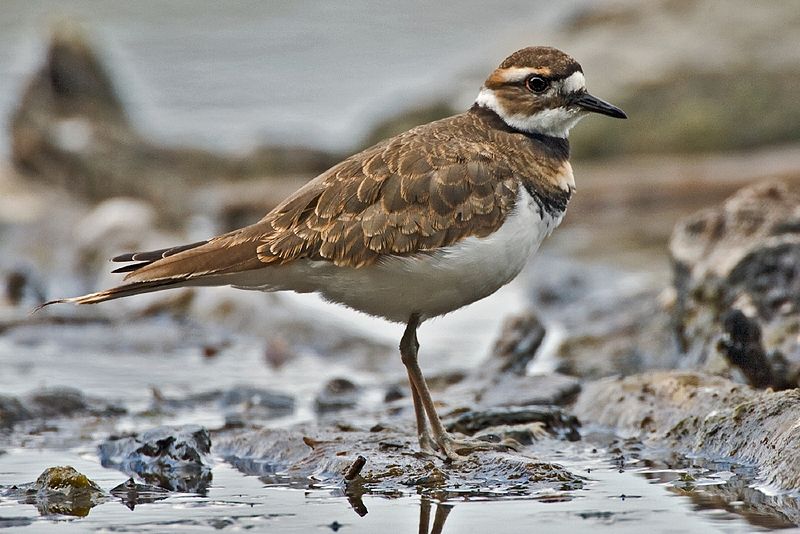
The Killdeer bird is a large plover found in the Americas. It has an unmistakable call which gives it its name, and boasts striking upperparts of brown with rufous fringes.
Its head features patches of white and black, while two distinctive bands adorn its neck – one black above, and one chestnut below.
The undersides are mostly white or pale buff-brown; their wings feature bright orange stripes when they take flight.
During breeding season males perform elaborate courtship rituals to attract females into establishing a pair bond; they also defend territories fiercely against other birds that encroach on them during this time.
In winter months some killdeers migrate southwards but many stay put throughout the cold weather too.
All in all these beautiful creatures provide us with quite a sight indeed.Scientific classification:
| Kingdom | Animalia |
| Phylum | Chordata |
| Class | Aves |
| Order | Charadriiformes |
| Family | Charadriidae |
| Genus | Charadrius |
| Species | C. vociferus |
Also Featured In: Most Popular Bird Species in North America, Most Common Lake Birds
4. Osprey
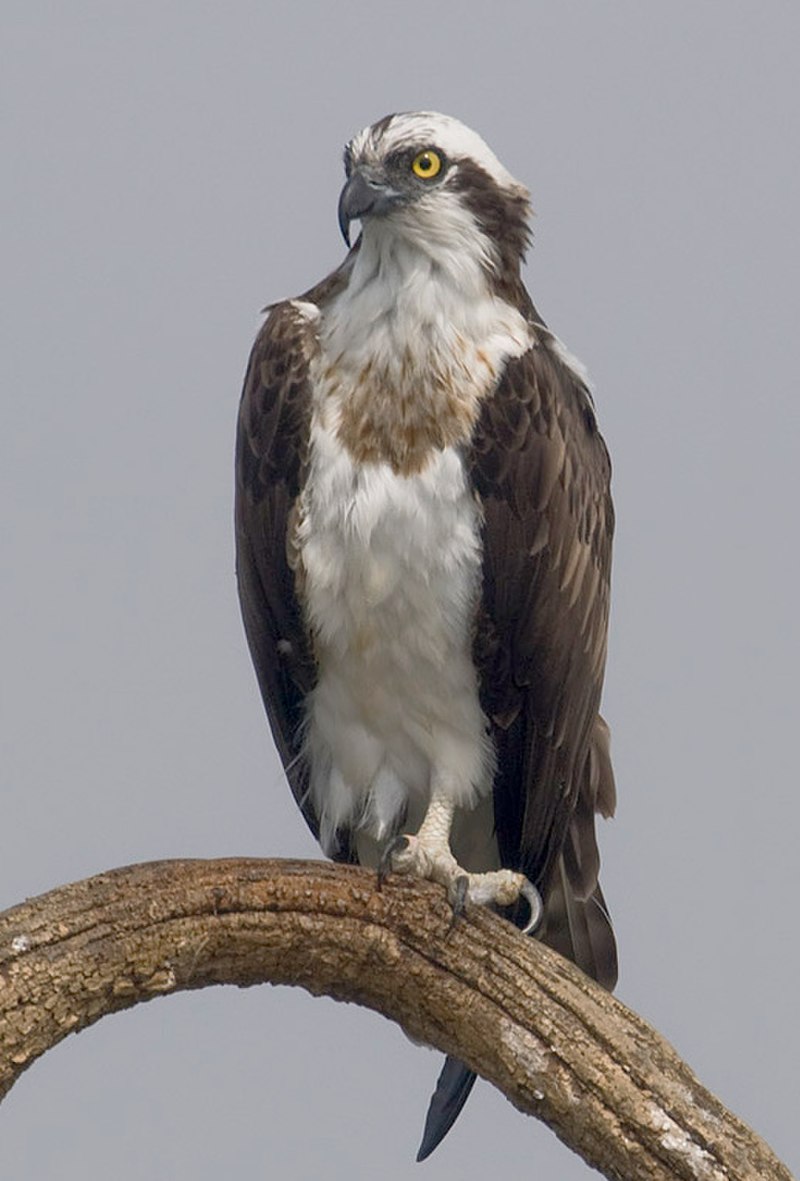
The Osprey is a majestic bird of prey with an incredibly wide habitat range. It has distinctive brown upperparts and greyish head and underparts, making it easily identifiable in the skies above many regions across the world.
With a wingspan of up to 180cm (71in) and body length reaching 60cm (24in), this large raptor specializes in hunting for fish, soaring high over rivers as well as coasts searching for its next meal.
Despite living near water sources, they can also be found inhabiting mountainsides or even woodlands, proving their incredible adaptability. An impressive species that truly deserves admiration.Scientific classification:
| Kingdom | Animalia |
| Phylum | Chordata |
| Class | Aves |
| Order | Accipitriformes |
| Family | Pandionidae |
| Genus | Pandion |
| Species | P. haliaetus |
Also Featured In: Ukrainian Birds You Should Know, Birds of Sweden
5. Sanderling
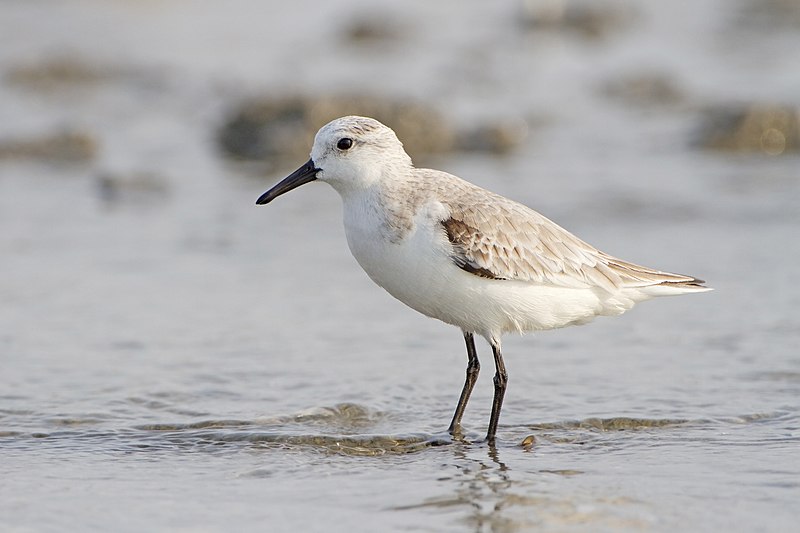
The Sanderling is a small wading bird that can be found in the Arctic region. Its name comes from Old English, meaning “sand-ploughman”. It has grey feathers and light legs which give it its distinct white coloration.
During summer breeding months, they are known to travel great distances – some wintering as far south as South America or Southern Africa. They typically feed on crustaceans such as shrimp and mollusks along coastal shores.
The Sanderling is an important species to watch out for because of their long migratory patterns and sensitivity to environmental change; if there’s trouble with this species then other birds may also be affected.Scientific classification:
| Kingdom | Animalia |
| Phylum | Chordata |
| Class | Aves |
| Order | Charadriiformes |
| Family | Scolopacidae |
| Genus | Calidris |
| Species | C. alba |
Also Featured In: Top Birds Found in Mexico, Galapagos Birds You Should Know
6. Great Blue Heron

The Great Blue Heron is a majestic wading bird found in many parts of North America, Central America, the Caribbean and even as far away as the Galapagos Islands.
It has an impressive wingspan which can reach up to six feet wide. Its feathers are mainly bluish-gray with brownish streaks on both its neck and chest while its head displays white plumes.
The adult herons can also be identified by their yellow bill and legs.
They live near bodies of water such as lakes, marshes or rivers where they feed on fish using a spear like motion with their sharp bills.
An all-white population exists only in south Florida and the Florida Keys making it quite unique.Scientific classification:
| Kingdom | Animalia |
| Phylum | Chordata |
| Class | Aves |
| Order | Pelecaniformes |
| Family | Ardeidae |
| Genus | Ardea |
| Species | A. herodias |
Also Featured In: Common Birds in Canada, Blue Birds You’ll Found around Us
7. Black Skimmer
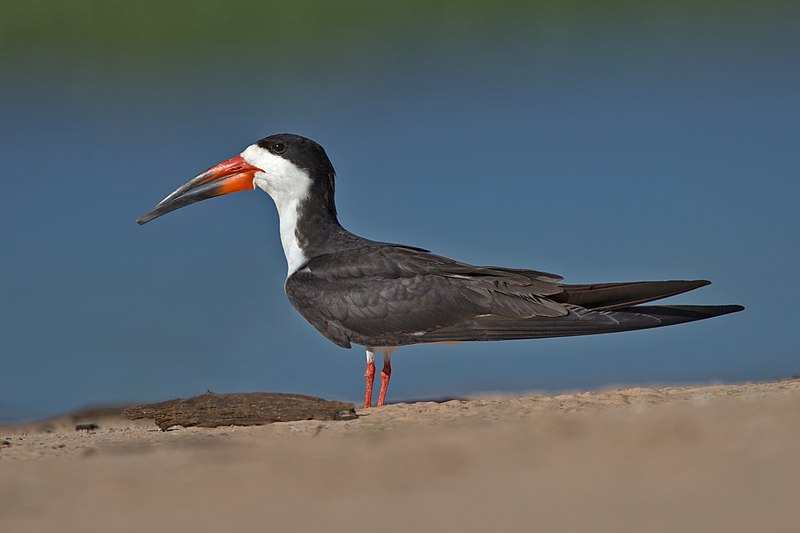
The Black Skimmer is a seabird which belongs to the skimmer genus Rynchops and Laridae family.
It breeds in North and South America, while Northern populations migrate south for winter towards warmer climates such as the Caribbean or Pacific coasts.
The Southern American races have adapted to annual floods by making shorter migrations during this time.
These birds are easily identified with their unique long red bill that has an upper mandible longer than its lower mandible.
They feed mainly on small fish caught at night when they skim across shallow water using their beak like a knife cutting through waves of water.
Their dark grey back contrasts against white belly feathers creating beautiful patterns in flight, aiding them in catching prey easier due to its camoflauge effect above and below waters surface.Scientific classification:
| Kingdom | Animalia |
| Phylum | Chordata |
| Class | Aves |
| Order | Charadriiformes |
| Family | Laridae |
| Genus | Rynchops |
| Species | R. niger |
Also Featured In: Most Unique Birds in Peru, Black And White Birds You Don’t Know About
8. Oystercatchers
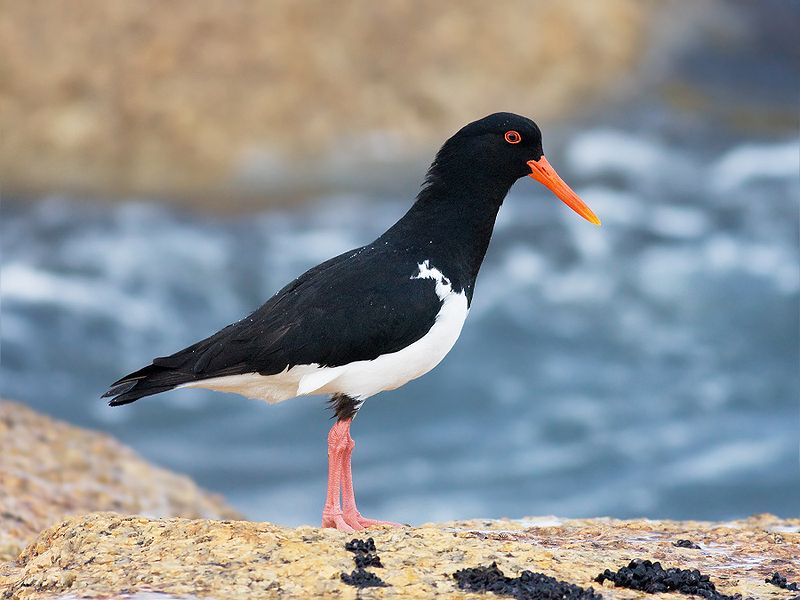
Oystercatchers are a family of waders forming the Haematopodidae, with one genus; Haematopus.
They live in coastal regions around the world excluding both polar and some tropical areas of Africa & South East Asia.
Eurasian, South Island & Magellanic oystercatcher species also breed far inland – breeding grounds being found much deeper than other members of the family.
They have long beaks used to feed on molluscs such as mussels, clams and oysters which they crack open using their strong bills.
Oystercatchers are usually quite vocal birds making various loud calls when disturbed or alarmed.
The males tend to display more brightly coloured plumage compared to females who share similar brown/black hues for camouflage purposes during nesting season.Scientific classification:
| Kingdom | Animalia |
| Phylum | Chordata |
| Class | Aves |
| Order | Charadriiformes |
| Suborder | Charadrii |
| Family | Haematopodidae Bonaparte, 1838 |
| Genus | Haematopus Linnaeus, 1758 |
Also Featured In: Best Birds Watching in Austria, Native Birds of Kazakhstan
9. Roseate Spoonbill
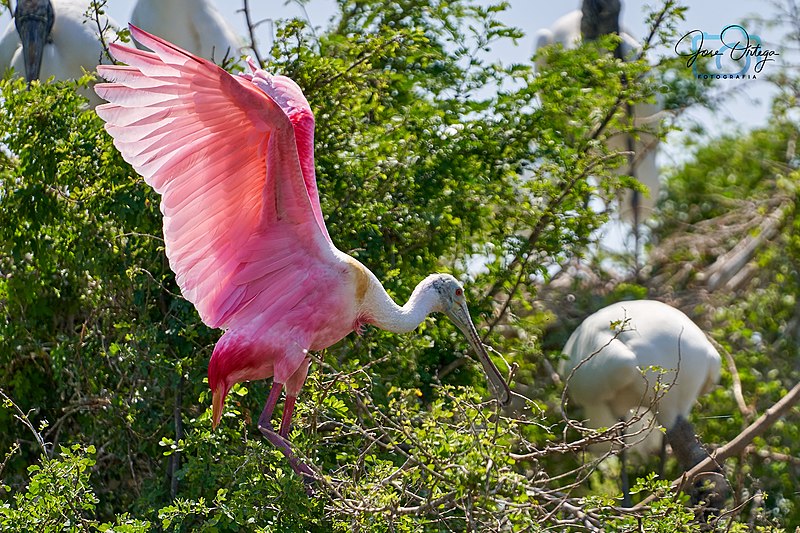
The Roseate Spoonbill is a beautiful and majestic bird found in both North and South America.
It belongs to the ibis family, Threskiornithidae, and its vibrant pink colour comes from canthaxanthin pigment derived from their diet of crustaceans like shrimp.
Sadly plume hunting has almost driven this species close to extinction during the 18th and 19th centuries but fortunately it’s making a comeback due to conservation efforts made by dedicated wildlife organisations.
Its large spoon-like bill helps them filter out food sources such as small fish or frogs from shallow water areas while they wade through mudflats with their long legs looking for something tasty.
With its unique appearance, graceful wingspan amd impressive flight capabilities, the Roseate Spoonbill is an incredibly photogenic animal that will captivate any viewers attention who happen to be lucky enough witness it in all its glory.Scientific classification:
| Kingdom | Animalia |
| Phylum | Chordata |
| Class | Aves |
| Order | Pelecaniformes |
| Family | Threskiornithidae |
| Genus | Platalea |
| Species | P. ajaja |
Also Featured In: Costa Rica Birds, Famous Paintings Birds
10. Royal Tern
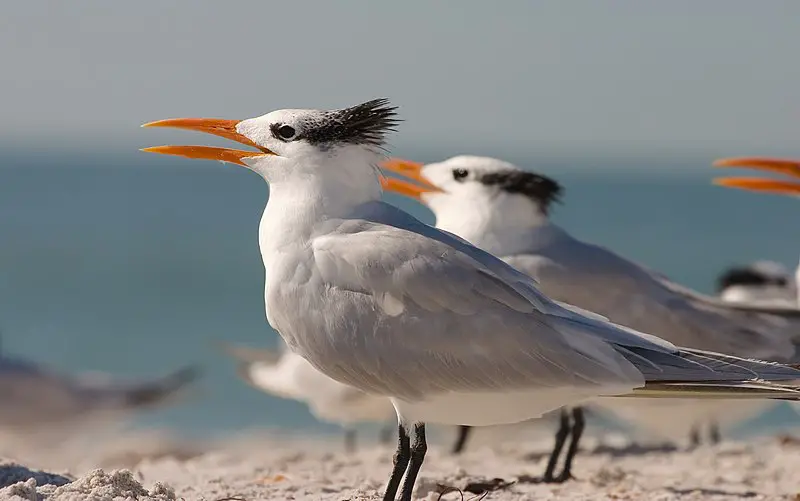
The Royal Tern is a beautiful seabird, endemic to the Americas. It has been spotted as far away as Europe on rare occasions though.
The species was first described by Georges-Louis Leclerc in 1781 from a specimen found in French Guiana and later illustrated with hand-coloured plates.
These birds have elaborate courtship displays that involve loud vocalizations and energetic aerial acrobatics.
They typically mate for life, nesting together near marshes or beaches each season close to their food source of fish and other small aquatic creatures. Their white plumage brightens up coastlines across America – they are truly majestic.Scientific classification:
| Kingdom | Animalia |
| Phylum | Chordata |
| Class | Aves |
| Order | Charadriiformes |
| Family | Laridae |
| Genus | Thalasseus |
| Species | T. maximus |
Also Featured In: Uruguay birds, Summer Birds that Live around Us
11. Snowy Egret
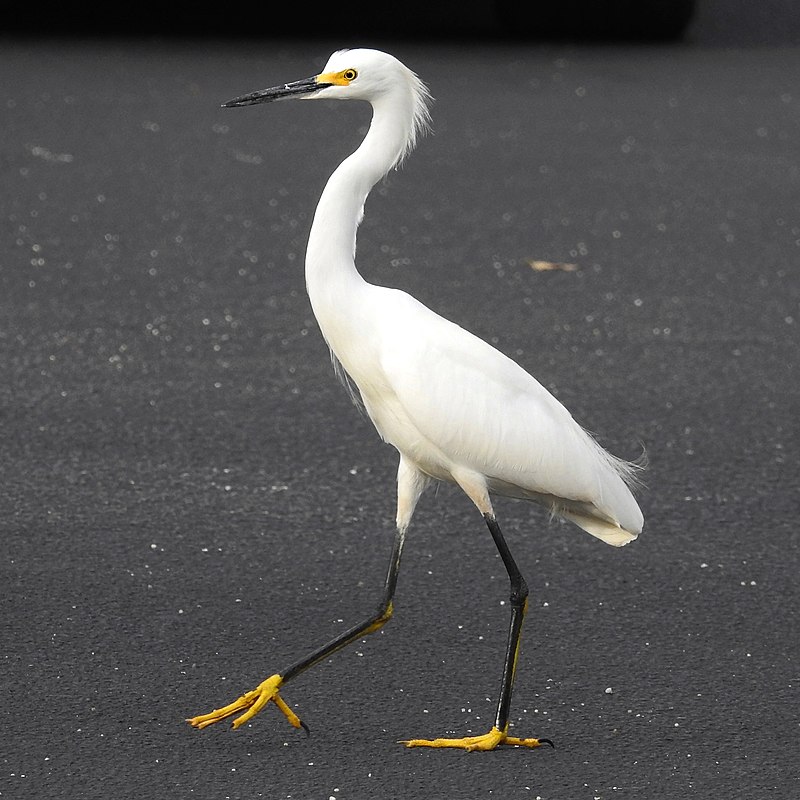
The Snowy Egret is a small white heron native to North America. Its scientific name, Egretta thula, comes from Provençal French for the little egret and an incorrect reference to the Black-necked Swan by Chilean naturalist Juan Ignacio Molina in 1782.
This beautiful bird has black legs with yellow feet, and a long plume of feathers on its head that often appears as if it’s wearing a crown.
It feeds primarily on insects and aquatic life like fish or frogs making it well adapted for both wetland habitats such as marshes or swamps plus coastal areas close to shorelines.
With their graceful movements they are truly delightful creatures to observe while out exploring nature.Scientific classification:
| Kingdom | Animalia |
| Phylum | Chordata |
| Class | Aves |
| Order | Pelecaniformes |
| Family | Ardeidae |
| Genus | Egretta |
| Species | E. thula |
Also Featured In: Trinidad and Tobago birds, Birds that Live in the Deserts
12. Forster’s Tern
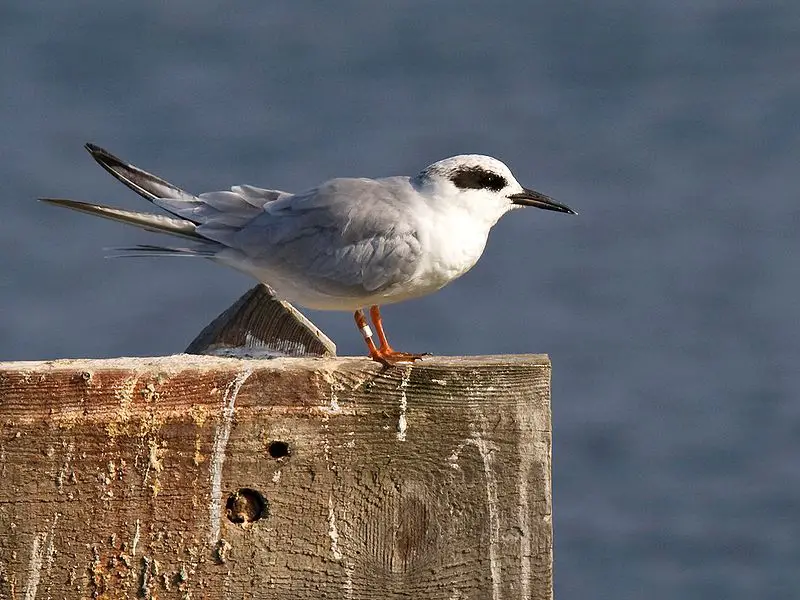
Forster’s tern is a bird of the family Laridae, named after naturalist Johann Reinhold Forster. It mainly breeds in North America and winters south to Central America, though it can also be found rarely but annually in western Europe.
This species has even been documented wintering as far north as Ireland and Great Britain.
The genus name Sterna comes from Old English “stearn”, meaning “tern”.
These birds generally have grey upperparts with white underparts and black heads with a small crest at its forehead that gives it an elegant look when flying around looking for food by diving into the water.Scientific classification:
| Kingdom | Animalia |
| Phylum | Chordata |
| Class | Aves |
| Order | Charadriiformes |
| Family | Laridae |
| Genus | Sterna |
| Species | S. forsteri |
Also Featured In: Bahamas Birds, Birds That Live In Union Island
13. Gray Kingbird
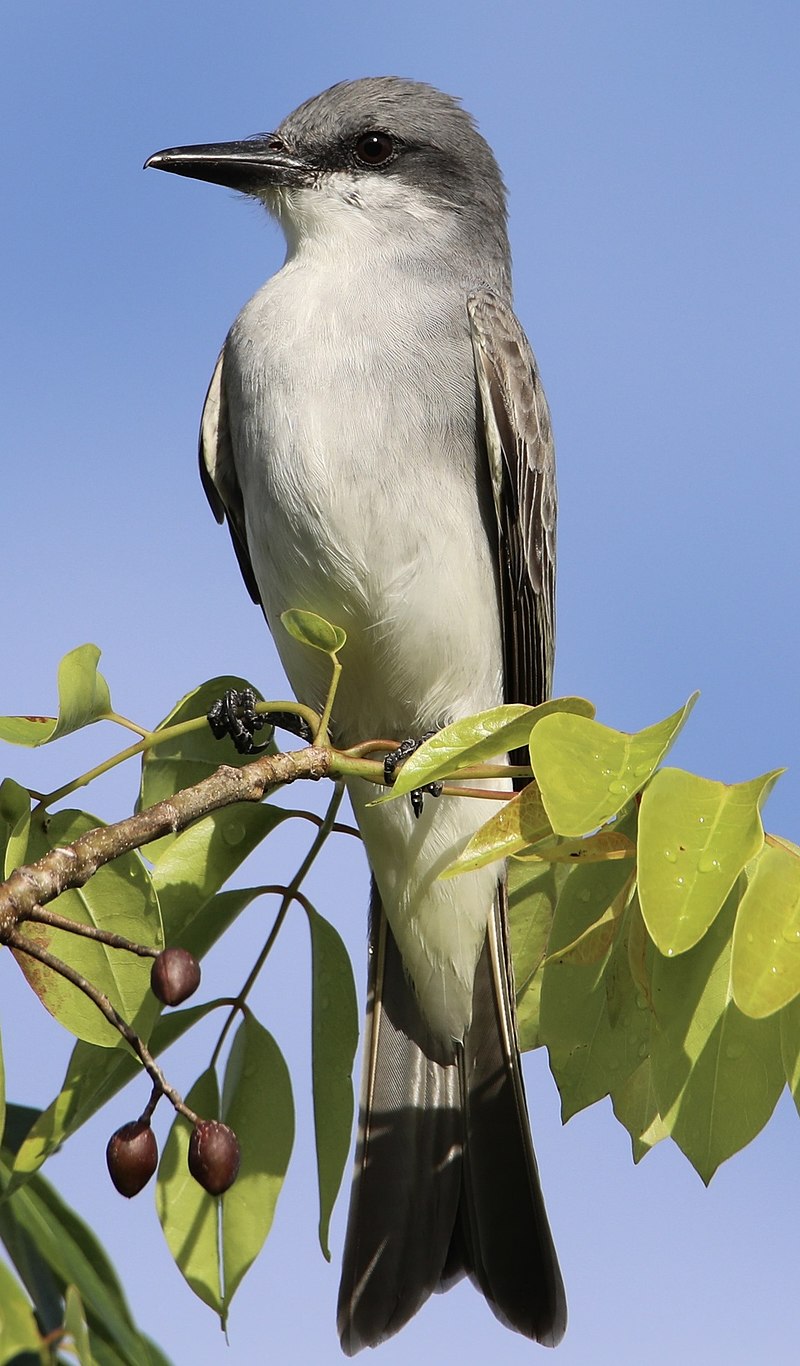
The Gray Kingbird is a species of tyrant flycatcher found in tall trees and shrubs, including the edges of savannas and marshes. It has gray feathers on its back with white underparts and blackish wings.
Its head is dark gray-brown or olive, while its tail is tipped with white. The Gray Kingbird builds flimsy cup nests from twigs in tree branches for their eggs to incubate safely until they hatch into chicks.
They feed mainly on insects such as moths, grasshoppers, beetles, crickets and caterpillars that can be caught midair when it swoops down from above like other kingbirds do.
This bird’s call consists of loud chirps which are often heard during mating season – making them an easily identifiable species within areas where they live.Scientific classification:
| Kingdom | Animalia |
| Phylum | Chordata |
| Class | Aves |
| Order | Passeriformes |
| Family | Tyrannidae |
| Genus | Tyrannus |
| Species | T. dominicensis |
Also Featured In: Barbados Birds, Birds that You’ll Find in Puerto Rico
14. Least Tern
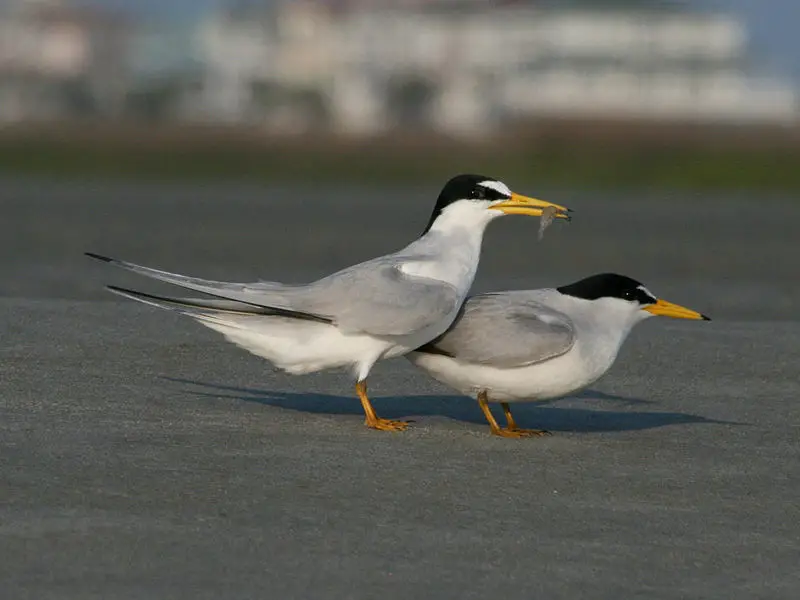
The Least Tern is a species of tern native to North America and northern South America. It has many close relatives, such as the yellow-billed tern and Peruvian tern from South America, or the little tern from the Old World.
The bird measures 8.7 – 9.4 inches in length with a wingspan of 16–18 inches acrosss, making it an intermediate size between most other species of birds within its family groupings.
Its feathers are usually gray on top with white underneath and typically have darker accents near their heads along with bright red bills for feeding during summer months when they mate upon beaches found throughout these regions mentioned above.
They feed mainly on small fish that live at shallow depths near shorelines where they also nest nearby due to migratory patterns which take place annually each year.
Hence why this particular bird does not travel far distances away from areas known as home for them over long periods of time like some other types do.Scientific classification:
| Kingdom | Animalia |
| Phylum | Chordata |
| Class | Aves |
| Order | Charadriiformes |
| Family | Laridae |
| Genus | Sternula |
| Species | S. antillarum |
Also Featured In: Aruba birds, Most Common Birds in South America Birds
15. Ring-Billed Gull
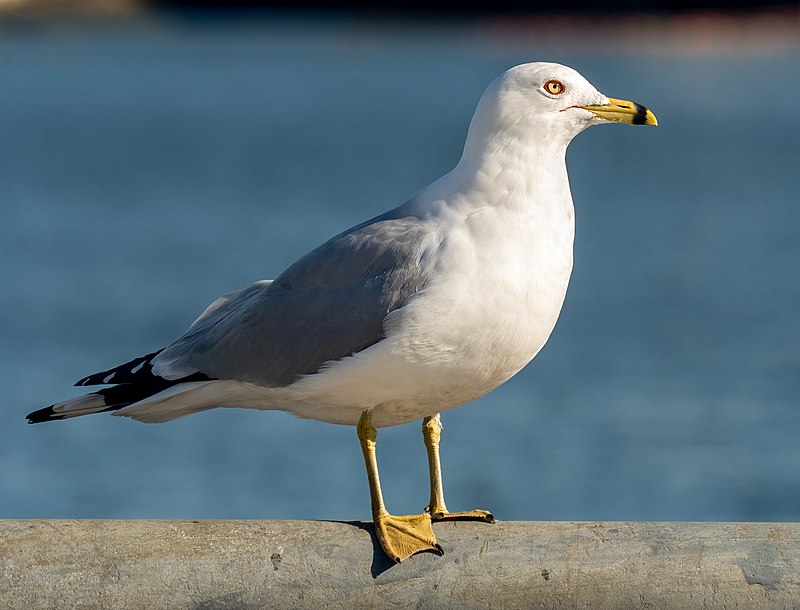
The Ring-billed Gull is a medium sized seabird that can be seen throughout North America. Its head, neck and underparts are white while its back and wings are silver gray in color.
It has a relatively short yellow bill with a dark ring around it, as well as yellow legs.
The genus name for this species of gull comes from the Latin word ‘Larus’ which referred to large sea birds or gulls; while the specific delawarensis refers to the Delaware River where these birds were first discovered.
These beautiful creatures thrive near coasts, lakeshores and other bodies of water but also have been known to inhabit urban areas such as parks close by those watersides due to their adaptability towards human habitats.Scientific classification:
| Kingdom | Animalia |
| Phylum | Chordata |
| Class | Aves |
| Order | Charadriiformes |
| Family | Laridae |
| Genus | Larus |
| Species | L. delawarensis |
Also Featured In: Gulls Species, Birds Live Near San Diego
16. Laughing Gull
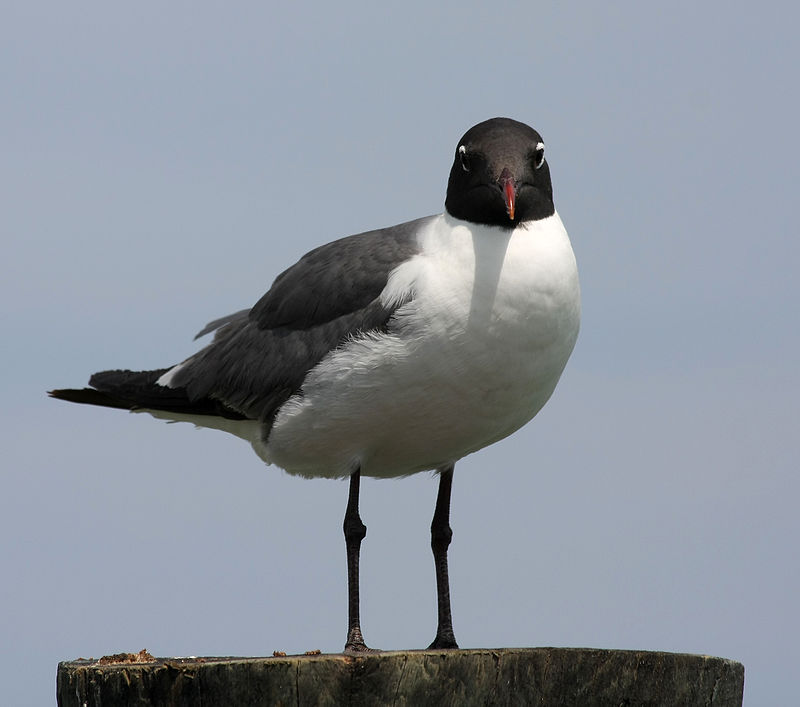
The Laughing Gull is a medium-sized bird with gray wings, black head and white underparts. It has bright red legs and bill which make it easily distinguishable from other gulls.
The name comes from its unique laughing call which can be heard in coastal areas throughout the Americas where they breed. They are opportunistic omnivores that feed on fish, carrion, insects or even garbage when available.
During breeding season these birds form large colonies along the Atlantic coast of North America as well as parts of northern South America and Caribbean islands.
There are two subspecies; L megalopturus found in Canada to Central America while L atricilla inhabits rest of their range..
These species have become more common inland due to human settlement near coasts creating ideal habitat for them but also making them scavengers around urban areas.Scientific classification:
| Kingdom | Animalia |
| Phylum | Chordata |
| Class | Aves |
| Order | Charadriiformes |
| Family | Laridae |
| Genus | Leucophaeus |
| Species | L. atricilla |
Also Featured In: Birds You’ll Find in South Texas , Birds that can be Seen in Outer Banks
17. Snowy Plover

The Snowy Plover is a small wader bird, about 5-7″ in length. It breeds in the southern and western United States, the Caribbean, Ecuador, Peru and Chile.
Once thought to be a subspecies of the Kentish plover it has since been reclassified as its own species.
In order to protect nesting areas along Central California’s coastlines parts or entire beaches are closed off during breeding season for this endangered species.
This rare bird can easily be identified by its sandy brown color with white underbelly that helps camouflage itself from predators while on land but stands out when taking flight due to its brilliant white wingspan which provides an eye catching display against blue sky backdrop.Scientific classification:
| Kingdom | Animalia |
| Phylum | Chordata |
| Class | Aves |
| Order | Charadriiformes |
| Family | Charadriidae |
| Genus | Charadrius |
| Species | C. nivosus |
Also Featured In: Common Californian Birds, Birds that Live in San Francisco Bay Area
18. Sternidae
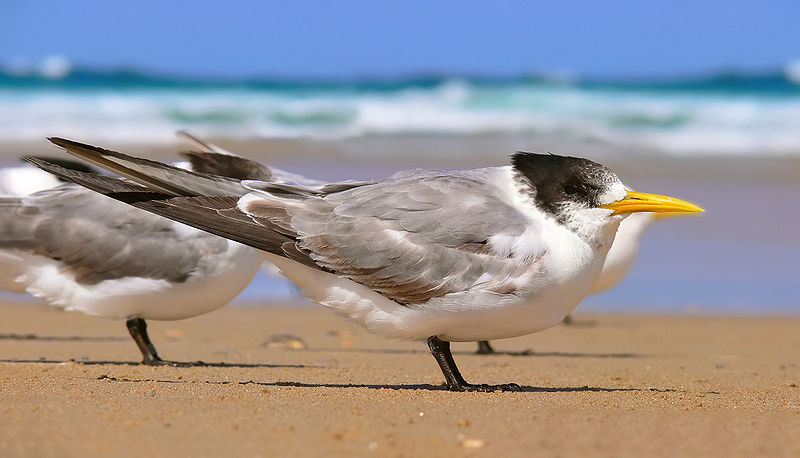
Sternidae are a subgroup of the family Laridae, consisting of eleven genera. They have slender bodies with long forked tails and narrow wings. Their bills are long and their legs relatively short.
Most species display pale grey or white plumage above, while underneath they show black markings on the head along with varying shades of browns elsewhere on their body.
These seabirds can be found in coastal areas near oceans, rivers and wetlands worldwide but especially in North America where they feed primarily on small fish which they capture by swooping down from the air to snatch them up from below the surface.
They also supplement this diet with crustaceans such as crabs when available.Scientific classification:
| Kingdom | Animalia |
| Phylum | Chordata |
| Class | Aves |
| Order | Charadriiformes |
| Family | Laridae |
| Subfamily | Sterninae Bonaparte, 1838 |
Also Featured In: Florida Birds, Birds You’ll Find in the Sea
19. Willet
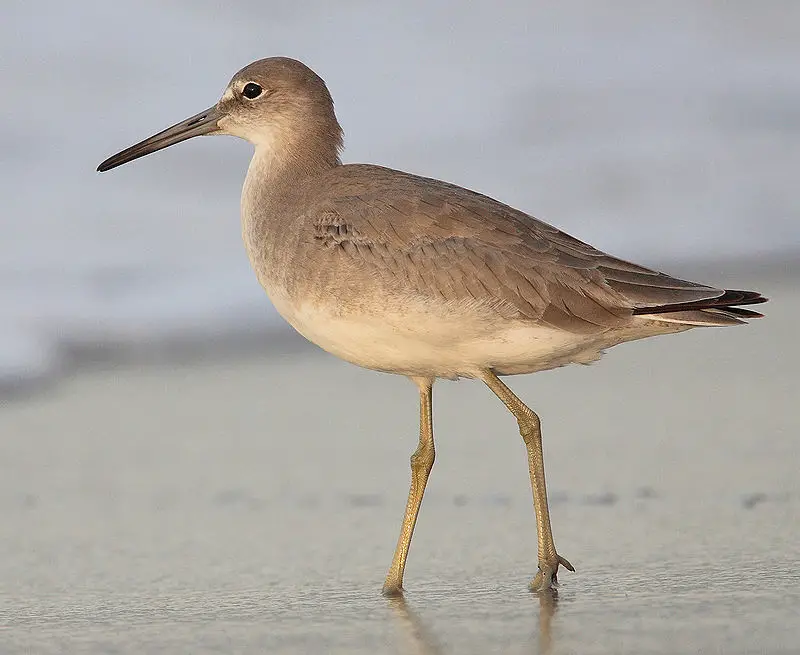
The Willet is a large and robust bird of the Scolopacidae family. It belongs to genus Tringa and it is much larger than its closest relative – lesser yellowlegs, which can be easily distinguished by its fine neck pattern.
The willet has brown upperparts with white patches on wings along with grey underparts. Its bill is thick, long and straight in shape having black coloration at tip while legs are also long but greenish-grey in colour.
They feed mainly on insects, worms or crustaceans that they find near coastal waters or wetlands as well as grains or seeds when available during winters.Scientific classification:
| Kingdom | Animalia |
| Phylum | Chordata |
| Class | Aves |
| Order | Charadriiformes |
| Family | Scolopacidae |
| Genus | Tringa |
| Species | T. semipalmata |
Also Featured In: birds of Delaware, Big Birds that Live in New Jersey
20. Common Nighthawk
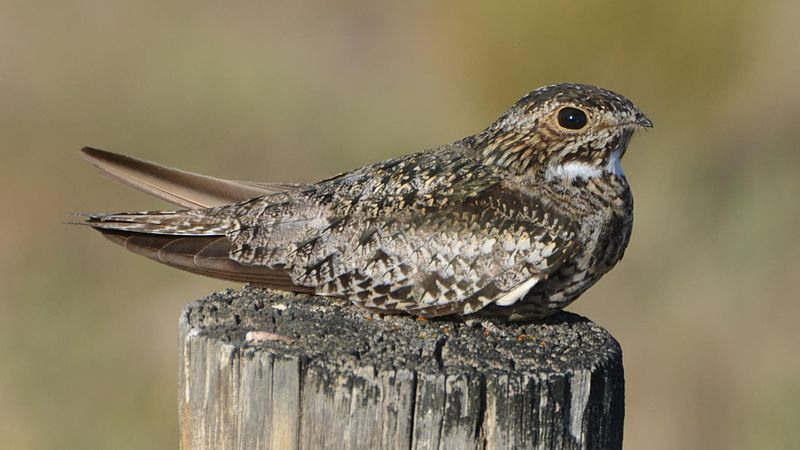
The Common Nighthawk is a medium-sized nocturnal bird of the Americas. It has dark grey, black and brown cryptic colouring which makes it difficult to spot during the day.
They are most commonly found in open fields or near water sources such as rivers and lakes with tall grasses and trees for shelter from predators at night.
Its identity can be easily revealed through its vocalization – a loud “peent” sound that they make while flying around looking for food like beetles, moths and other insects.
During mating season their display flight includes steep dives followed by sharp climbs accompanied by their distinctive call making them even easier to identify.Scientific classification:
| Kingdom | Animalia |
| Phylum | Chordata |
| Class | Aves |
| Order | Caprimulgiformes |
| Family | Caprimulgidae |
| Genus | Chordeiles |
| Species | C. minor |
Also Featured In: birds of Vermont, Central Texas Birds
21. Brown Pelican

The majestic brown pelican is a dive-feeding bird that belongs to the pelican family. It is one of the three pelican species found in the Americas and is known to dive into water to catch its prey.
From the Atlantic Coast of New Jersey to the mouth of the Amazon River, and along the Pacific Coast from British Columbia to northern Chile, including the Galapagos Islands, this bird can be found.
Its scientific name is Pelecanus occidentalis, and it has a colored brown plumage, which is its distinct characteristic.
The brown pelican belongs to the largest bird species that exist today, with a wingspan that can stretch up to seven feet long.
This bird helps maintain a balance in the ecosystem by eating smaller fish, crustaceans, and other aquatic prey.Scientific classification:
| Kingdom | Animalia |
| Phylum | Chordata |
| Class | Aves |
| Order | Pelecaniformes |
| Family | Pelecanidae |
| Genus | Pelecanus |
| Species | P. occidentalis |
Also Featured In: Water Birds Live around Us, Flight Birds You Should Know
22. Wilson’s Plover
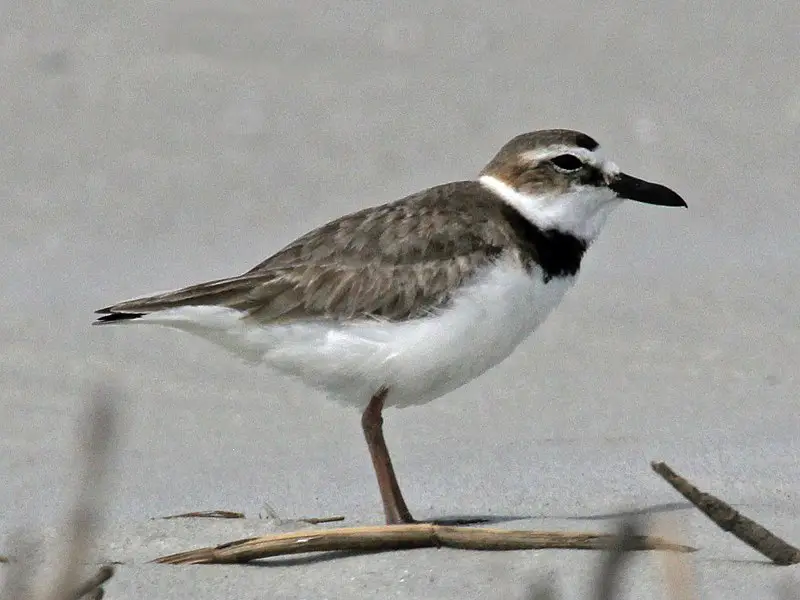
Wilson’s plover is a bird belonging to the Charadriidae family. The species was named after the ornithologist Alexander Wilson by his friend George Ord.
This small bird is typically found along the coasts of the Americas and breeds on both sides of the equator. Its range extends northward, including much of the U.S.
eastern seaboard and the Pacific coast of Mexico. Wilson’s plover is a coastal wader that loves to inhabit sandy and rocky shores, beaches, and salt marshes. They feed on crustaceans, insects, and other small creatures found near the shoreline.
This bird’s male and female have a similar appearance, with brownish-grey upperparts and white underparts. They are known to fiercely defend their nests and young against predators.
The Wilson’s plover is a unique bird species that plays a significant role in the coastal ecosystem.Scientific classification:
| Kingdom | Animalia |
| Phylum | Chordata |
| Class | Aves |
| Order | Charadriiformes |
| Family | Charadriidae |
| Genus | Charadrius |
| Species | C. wilsonia |
Also Featured In: Most Common Oaxaca Birds, Great Abaco Island Birds
23. Caspian Tern
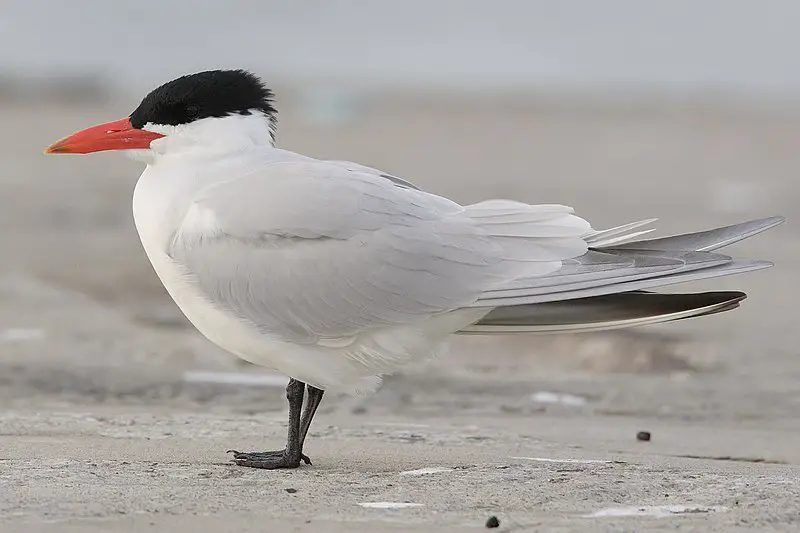
The Caspian tern is a unique bird species that is widely spread across the world. This bird is the sole member of its genus and has no subspecies. Its scientific name, Hydroprogne caspia, comes from the Greek word for water and the Latin term for swallow.
The Caspian tern’s distinctive name comes from its association with the Caspian Sea. Despite being named after a sea, the Caspian tern is a migratory bird that is not limited to one specific habitat.
It is well-known for its striking appearance and impressive wingspan of 165 cm, the longest of any tern species.
This bird’s population is considered to be stable, and it has also been used to monitor ecosystem health, making it an important species to preserve.Scientific classification:
| Kingdom | Animalia |
| Phylum | Chordata |
| Class | Aves |
| Order | Charadriiformes |
| Family | Laridae |
| Genus | Hydroprogne Kaup, 1829 |
| Species | H. caspia |
Also Featured In: Native Birds Of West Swan Island, Most Common Birds of Caladesi Island